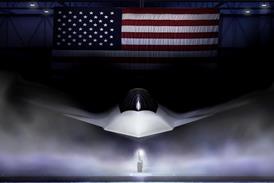Review questions suitability of type for homeland security
Follow-on orders for 33 EADS Casa CN-235-300s are at risk after a US Coast Guard review of its maritime patrol aircraft (MPA) requirement for the Deepwater programme. Separately, a USCG-sponsored report urges more resources for unmanned aircraft for the MPA mission.
Coast Guard officials in February signed an $87.4 million deal to buy two CN-235s and have options for six more. But agency officials no longer believe the aircraft is suitable for an emerging set of homeland security missions. Some roles, such as airlifting maritime safety and security teams (MSST), had not been envisaged when the CN-235 was selected.
"The Casa aircraft does not have the volume and the space to deal with MSST. We have to think through that issue and refine the force mix for the fixed-wing [requirement]," USCG Commandant Adm Thomas Collins says. "This summer, we'll have a final fixed-wing lay down for Deepwater."
Orders for six CN-235s have already been shifted to Lockheed Martin C-130Js under a long-range surveillance requirement.
The MPA review is part of a larger analysis under way within the agency, which is struggling to adjust a 22-year acquisition timeline for Deepwater systems to meet a growing number of homeland security missions and increasing calls to accelerate deliveries.
"The contract for the EADS Casa CN-235 to support the US Coast Guard Deepwater programme is a clear validation of the capability, flexibility and value of the CN-235 as an MPA platform," says EADS Casa North America president and chief executive, Jose Morales. "EADS Casa North America will continue to work to meet our customer's needs in fulfilling their mission of protecting America's borders." Last week, Rand published a USCG-commissioned report that urges the agency and Congress to restructure dramatically the $17 billion programme. "The Deepwater programme would acquire only half of the surface assets and two-thirds of the air assets required to meet the demands of traditional missions and emerging responsibilities," the report concludes.
Rand proposes a larger aviation force structure, relying more on unmanned air vehicles, while maintaining the size of the manned fixed-wing patrol requirement. Instead, orders for a high-altitude long-endurance UAV would jump from seven to 25, and the vertical take-off UAV requirement from 69 to 123. The plan proposes raising the multimission cutter helicopter fleet from 93 to 139, and calls on the USCG to consider airships.
STEPHEN TRIMBLE / WASHINGTON DC
Source: Flight International























